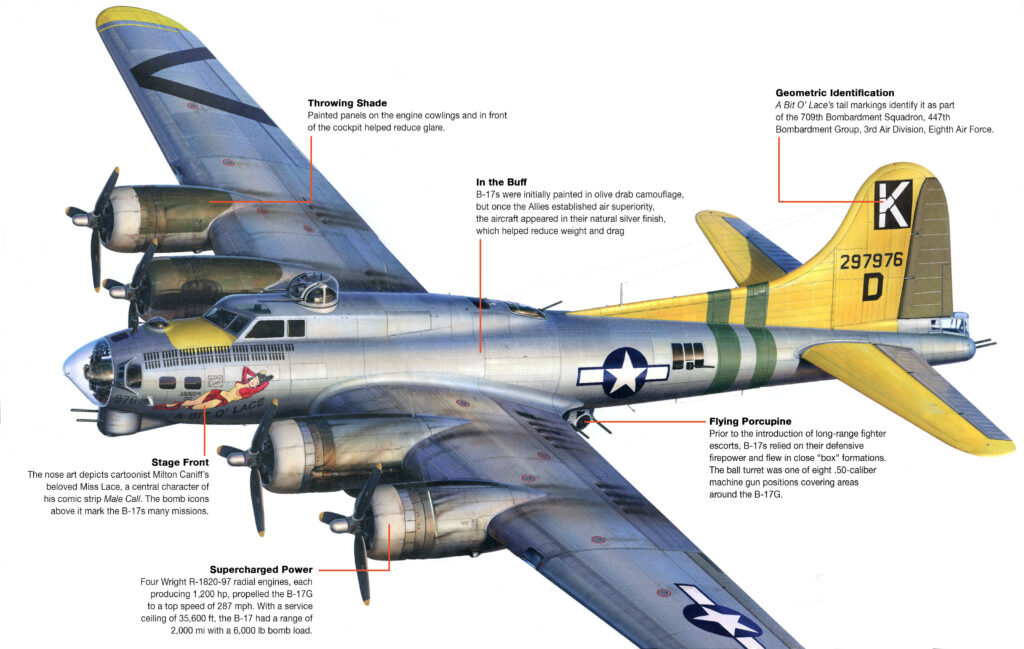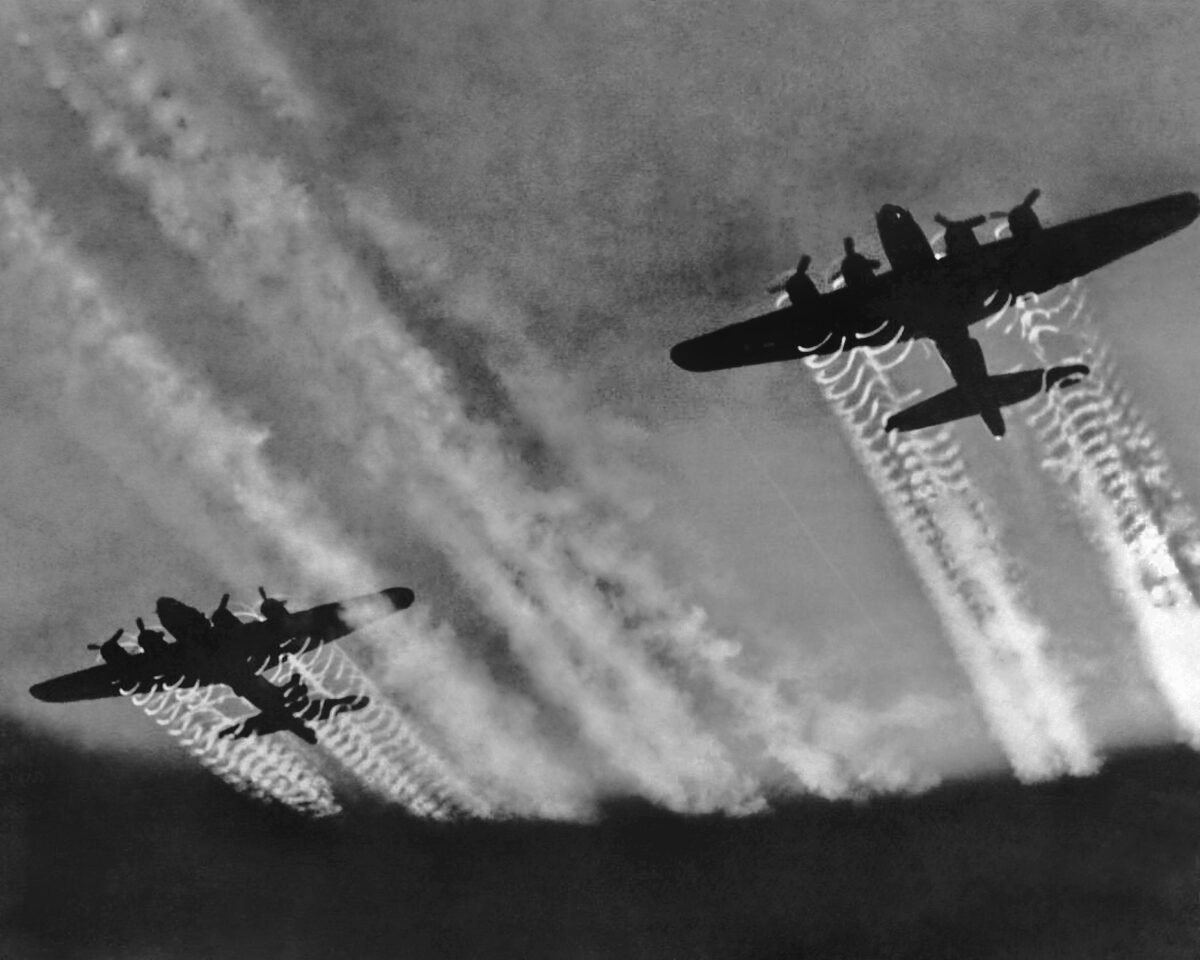The B-17 Flying Fortress is best known as the primary workhorse of the U.S. Army Air Forces’ daylight strategic bombing campaign in Europe. In all, the B-17 equipped 32 overseas combat groups and dropped 640,036 tons of bombs in Europe, more than any other American aircraft. Although the B-17 also operated in the Pacific Theater, General Henry “Hap” Arnold preferred the B-24 Liberator’s longer range, and B-17 groups there were converted to other types by mid-1943. Nevertheless, pilots largely preferred the B-17 for its stability and ability to keep flying even with extensive battle damage. During the war, Boeing and other companies manufactured 12,731 Flying Fortresses in eight variants. The final model, the B-17G, began production in July 1943 and featured numerous improvements over previous variants. The B-17G cost an average of $238,300; 8,680 were built by war’s end. The B-17G depicted here, A Bit O’ Lace, completed 83 consecutive missions Lace, completed 83 consecutive missions—a testament to the ground crew’s dogged efforts to keep the bomber fit for duty.







